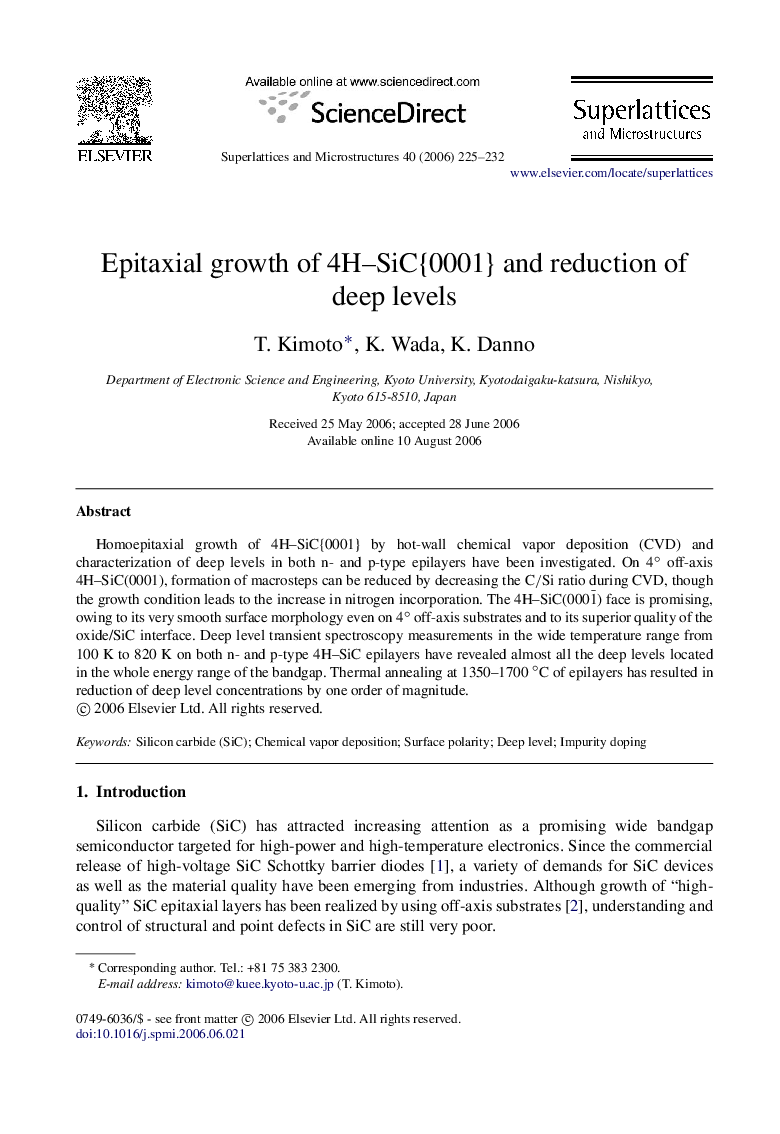| Article ID | Journal | Published Year | Pages | File Type |
|---|---|---|---|---|
| 1555206 | Superlattices and Microstructures | 2006 | 8 Pages |
Homoepitaxial growth of 4H–SiC{0001} by hot-wall chemical vapor deposition (CVD) and characterization of deep levels in both n- and p-type epilayers have been investigated. On 4∘ off-axis 4H–SiC(0001), formation of macrosteps can be reduced by decreasing the C/Si ratio during CVD, though the growth condition leads to the increase in nitrogen incorporation. The 4H–SiC(0001̄) face is promising, owing to its very smooth surface morphology even on 4∘ off-axis substrates and to its superior quality of the oxide/SiC interface. Deep level transient spectroscopy measurements in the wide temperature range from 100 K to 820 K on both n- and p-type 4H–SiC epilayers have revealed almost all the deep levels located in the whole energy range of the bandgap. Thermal annealing at 1350–1700 ∘C of epilayers has resulted in reduction of deep level concentrations by one order of magnitude.
